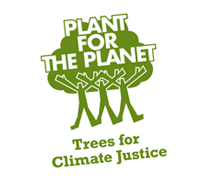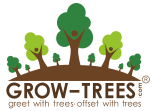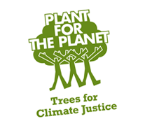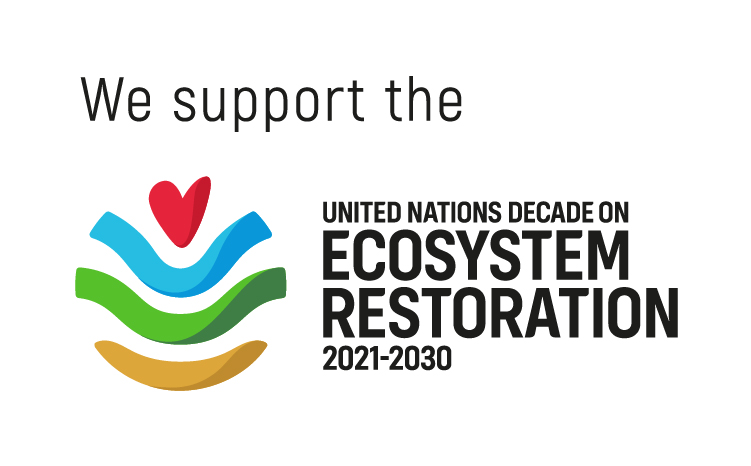Trees for Water®
Cherangani Hills, Kenya
Project Purpose
Trees for Water®Location

Plantation of local tree species on community-owned lands in Cherangani Hills in the Western Highlands of Kenya, about 320 kms northwest of Nairobi.
Aim
- To augment water catchment, reduce soil erosion, improve groundwater recharge and reduce flooding
- To boost the availability of biomass from trees for the local community, mainly hunter-gatherers
- To improve wildlife habitat for locally endangered bird species and other wildlife prominent in the region
- To address the goal of the Constitution of Kenya 2010 of having tree cover over 10% of the land area of Kenya and to support Kenya Vision 2030, the development blueprint for Kenya, under which protection of water towers is a flagship project
- To fight climate change
Why Trees?
The five main water towers (water catchment areas) “are the sources of all but one of Kenya’s major rivers. Their forests and soils store and release water that ensures the year-round flow of most rivers - supplying more than 75 percent of the country’s renewable surface water, according to the United Nations Environment Programme (UNEP)” stated YaleEnvironment 360.
According to the Cherangani Hills Strategic Ecosystem Management Plan 2015-2040, “The Cherangani Forest Ecosystem, like other forests and woodlands in Kenya contributes significantly to the national economy. It provides multiple environmental, economic, social and cultural benefits that promote opportunities for poverty alleviation and economic development. It creates significant employment opportunities and livelihood prospects in the adjacent rural areas, thereby stemming the rural-urban migration. It serves as a water catchment that recharges rivers and dams, which supply water for domestic use and hydroelectric power generation. Besides, the role of the ecosystem is cross-cutting into ecotourism, wildlife conservation and the provision of consumptive goods and services such as fuelwood, timber, and fodder among others. The forests are important as water catchments and are situated between Lakes Victoria and Turkana basins. The streams from the watershed flowing to the west feed the Nzoia River and into Lake Victoria, while those to the east flow into Kerio River and eventually, Lake Turkana.”
"Recurrent droughts have destroyed livelihoods, triggered local conflicts over scarce resources and eroded the ability of communities to cope" (ReliefWeb), highlighting the importance of augmenting water catchment.
The project involves planting 50,000 saplings of a mix of local species. The Cherangani Strategic Ecosystem Management Plan also talks about promoting reafforestation. "Kenyans have been urged to plant and conserve trees as long-term measures against drought and starvation", reported the Star, March 22, 2019, citing Kenya Wildlife Service senior scientist Jane Wamboi.
YaleEnvironment 360 also stated, "The Kenya Forest Service (KFS), which once saw its main job as exploiting forests, now concentrates on protecting them, says John Wachihi of KFS. We need to increase these [water] catchment areas where possible and increase the water retention capacity of the highlands. That’s where the future lies. Because, if you are talking about water, you are talking about trees.”
Birdlife International while speaking of the Cherangani Hills mentioned, "There are a number of serious conservation problems. These include encroachment, de-gazettement for settlement, poaching of trees for building or charcoal burning, livestock grazing, and tree-felling by honey gatherers (for honey, or for manufacturing beehives). Occasional fires, possibly started by honey gatherers, also occur—one destroyed hundreds of hectares in Kapkanyar forest in 1986." The findings of a study in the Emobobut forest of Cherangani Hills indicated, “95.2% of the respondents benefited from the forest with fuelwood being the most harvested forest product (71.4%). Other benefits and products obtained from the forest included grazing, building poles, wild fruits, and bush meat. Despite the conservation efforts by community members and the Kenya Forest Service (KFS), a number of conservation challenges existed in the study area including illegal grazing, illegal logging, charcoal burning, forest fires and encroachment into the forest." The trees planted under this project will partly counter the illegal logging and deforestation that has taken place.
Fauna
The trees planted in this project will benefit the local flora and fauna. Ecological surveys have recorded over 73 forest-dependent species. Regionally threatened species include Gypaetus barbatus (or bearded vulture, also known as the lammergeyer or ossifrage, one of the last breeding populations in Kenya, nesting on the high peaks), Stephanoaetus coronatus (African crowned eagle, or crowned hawk-eagle, widespread in small numbers), Glaucidium tephronotum (Red-chested owlet, recently recorded in Kapkanyar), Campephaga quiscalina (Purple-throated cuckoo shrike, uncommon and local; recent records from Kapkanyar) and Indicator conirostris (thick-billed honeyguide, uncommon).
Non-bird biodiversity: The ungulate Tragelaphus eurycerus (the bongo) has been recorded here in the past, but its current status is unknown. The butterfly Capys juliae is endemic to the Cherangani Hills. (BirdLife International 2019 Important Bird Areas factsheet: Cherangani Hills)
Social Impact
On average, a tree offsets 20 kgs of carbon and produces 118 kg of oxygen annually. The trees reverse the effect of adverse climatic conditions and natural phenomena, thus, protecting the community at risk. In addition to augmenting water catchment, reducing soil erosion, recharging groundwater, providing flowers, fruits, fodder, and fuel, improving wildlife habitats, generating oxygen, reducing carbon dioxide in the atmosphere and fighting climate change, this project will create approximately between 3,750 and 4,500 workdays of employment in the nursery and planting activities alone. By planting these trees, the organization will contribute to protecting soil erosion/Riverbank erosion/Reduce siltation and hence, better-quality water to over 3 million people.









